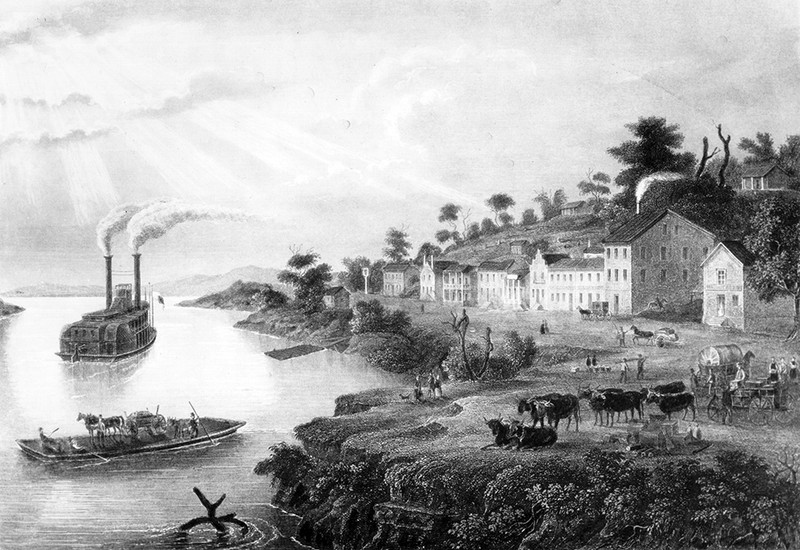Westport Landing
Introduction
Text-to-speech Audio
A new city would be founded in the middle of the 19th century, South of the Kansas River’s confluence with the Missouri River, this new city, Westport, would need a place for people and goods to be able to enter and leave the new town. The spot for this would be what is known as the River Landing, a wide piece of land that would be the site for the supply of the new city. The Landing would serve the growth of the West as it was a destination for people seeking to go West on the trails that ran through the area. Eventually, as boat travel diminished, the area around the landing would develop into a diverse spot for immigrants to live and work in, thus paving the way for its current situation in the area.
Images
1850 drawing of the Westport Landing

Backstory and Context
Text-to-speech Audio
The French were the first people to have taken notice of the land that would become the Westport Landing, French fur traders had made the trip up the Missouri River to penetrate further into the Native lands to gather more pelts to send back to France. Auguste Chateau, a wealthy citizen of St. Louis established a trading post in the area and his sons would be the first to settle the area. Lewis and Clark would stay within the area on their trip West and during the return trip, would stop at the future site of the Landing. The first person to have a grander vision of the land would be John Calvin McCoy.
McCoy would build a fir outpost around the city he would call Westport. Westport is about four miles south of the Westport Landing. Upon the death of the owner of the land that would become the Landing and Kansas City, that owner being Gabriel Prudhomme, McCoy would begin to build a road that would stretch from the Landing to his town of Westport. McCoy would form a company along with William Chick, William Sublette, and 11 other people in the area, this company was the town company, and upon the death of the owner of the land that would become the Landing and Kansas City, that owner being Gabriel Prudhomme, McCoy, and the town company would purchase his land and begin to build a road that would stretch from the Landing to his town of Westport. The company platted out land for a town they would call Kansas.
The first Steamboat to land at the Landing would be the John Hancock, carrying goods for McCoy. Kansas would become a major stop for emigrants looking to go West and the town would feature stores that would supply the people looking to go West, who would come by steamboat to set off by wagon to the West. The next big wave of people coming through the Landing would be after the passing of the Kansas-Nebraska Act, causing an influx of people coming to the state of Kansas to decide its future with slavery. The town of Kansas sat on the border of the state of Kansas and the Landing would see many disembark on its banks to travel to Kansas to decide the issue of slavery.
Westport Landing would fall out of favor as the spot to enter Kansas City with the advent of the train and later the automobile, more streets would be built, and its use would fall away with the steamboat. Westport Landing is now the site of parks, and the area around has turned into a bustling area of economics, from the apartments, restaurants, and stores that sit around the former hotspot of transportation in the area.
Sources
Westport Landing, National Park Services Kansas City Historic Trails Area, bridge opening aug11_2011.indd (nps.gov)
Why is there a Kansas City in both Kansas and Missouri, The Kansas City Public Library, https://kchistory.org/faq/why-there-kansas-city-both-kansas-and-missouri
